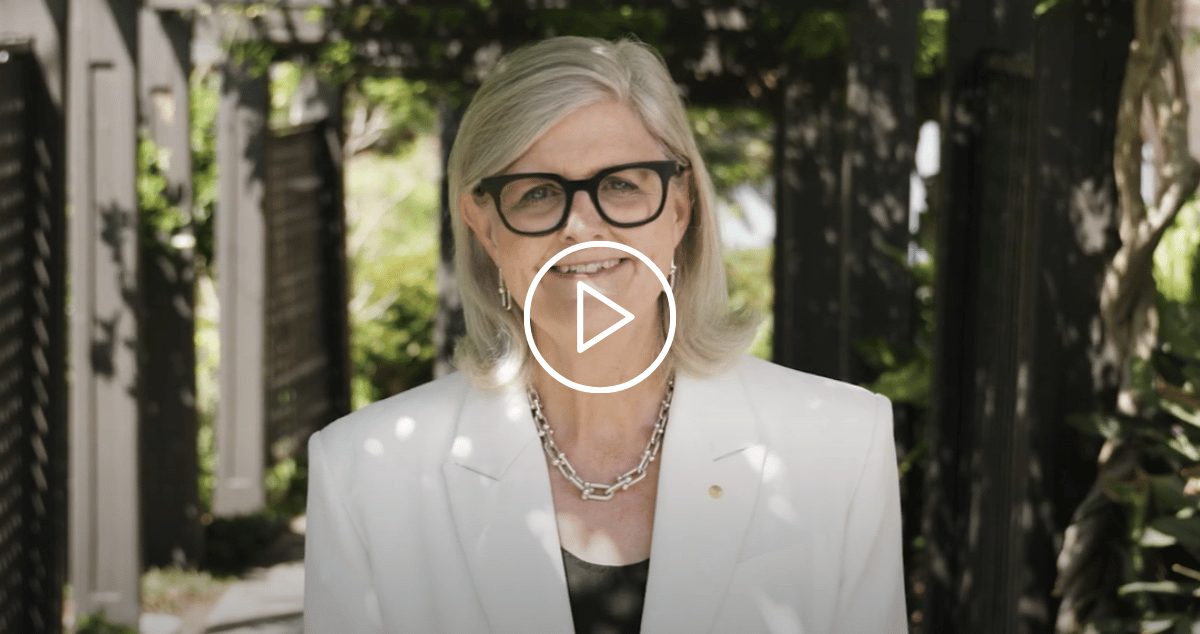Share
Sydney, Australia– Glaucoma, characterized by progressive neurodegeneration of the optic nerve and loss of retinal ganglion cells (RGC), is a leading cause of irreversible blindness globally. Despite the availability of effective IOP-lowering treatments, many patients still experience vision loss. So, how do we protect RCG? That is the question the recipient of Glaucoma Australia’s ‘Quinlivan’ Research Grant seeks to answer.

Glaucoma Australia and its Patron, the Governor-General of Australia, Her Excellency the Honourable Sam Mostyn, are pleased to announce the 2024 Glaucoma Australia Quinlivan research grant is awarded to Associate Professor (A/Prof) Andrew White from the Centre for Vision Research at the Westmead Institute for Medical Research (WIMR).
“Sight is precious, and an Australia free from glaucoma blindness is an important goal. Glaucoma Australia’s support of innovative research is a hand of hope to everyone affected by glaucoma. Andrew has made his mark as a passionate advocate for the glaucoma community. He has devoted decades of research to identifying safer and more effective treatments for glaucoma – and improving outcomes for glaucoma patients. His work is an act of care and commitment that represents the very best of our nation”, the Governor-General said.
A/Prof Andrew White, a clinical scientist ophthalmologist specializing in glaucoma, brings credibility with his extensive clinical trial experience and leadership in vision research. His innovative work in glaucoma detection, treatment, and various clinical trials, including depot latanoprost and a novel neuroprotective agent, retinal photography for disease diagnosis in emergency departments (FOTO-ED) underscores his expertise.
A/Prof White’s innovative project will focus on the development of Irbesartan as a potential therapeutic agent in the treatment and management of glaucoma.
A/Prof White states that “Over the next five years, our research vision focuses on revolutionizing the management of open-angle glaucoma through precision medicine”.
“This drug has been on the market since 1998,” he explains. “It’s a really good anti-inflammatory which has the potential to protect important retinal eye cells from dying. That could go a long way towards preserving sight in a lot of glaucoma cases.”
“Glaucoma is the leading cause of irreversible blindness in Australia,” he says. “We’ve got a lot of fairly effective treatments that revolve around reducing pressure in the eye. But for about one in five people with glaucoma, they don’t work.
“This research is about the 20% of people who can get worse with the current glaucoma treatments and progress to lifelong blindness.”
From his own clinical experience, Assoc Prof White understands the urgent need to find new treatment alternatives for glaucoma.
“When people can’t see, especially as they get older, they can’t work, they’re a risk of falls, their quality of life suffers, and they need a lot of looking after.
“I hope to prevent a lot of that by keeping people seeing as long as possible.”
This research addresses a critical need in glaucoma treatment, focusing not just on reducing intraocular pressure (IOP) but also on neuroprotection for retinal ganglion cells (RGC), for which no pharmacological therapies currently exist. This dual approach could significantly enhance treatment outcomes for glaucoma patients, particularly those unresponsive to current IOP-lowering therapies alone.
Glaucoma Australia CEO Adam Check said “Associate Professor White has long been a passionate advocate for the glaucoma community underpinned by his empathetic and innovative pursuit to advance glaucoma treatments for patients. As a staunch champion for the services delivered by Glaucoma Australia, it is a privilege to award this grant, on behalf of the glaucoma community. I congratulate him wholeheartedly”.
The Glaucoma Australia ‘Quinlivan’ research grants are awarded following rigorous evaluation, based largely on the National Health and Medical Research Council (NHMRC) process, along with peer review, to ensure that the successful applicants meet the highest standards. Submissions are reviewed by the Glaucoma Australia Independent Research Panel consisting of internationally recognised experts in glaucoma research including the fields of Ophthalmology, Optometry and Pharmacy.
The research funds would not be possible without the generous gifts of donors who support Glaucoma Australia’s William A. Quinlivan Research Fund.
For over 20 years, this research has played an integral role in developing improvements in eye health and glaucoma treatments. Contributions to this ongoing research are welcomed by making a tax-deductible donation to Glaucoma Australia.
-ENDS-
For more information
Adam Check
CEO Glaucoma Australia
(02) 9411 7722
ceo@glaucoma.org.au
About Associate Professor Andrew White
Clinical Associate Professor Andrew White is a clinician scientist ophthalmologist at The Westmead Institute for Medical Research with close links to Westmead Hospital, with an interest in eye conditions resulting in vision impairments and vision loss. These conditions include cone dystrophies, diabetic retinopathy, macular degeneration and glaucoma. Andrew’s specific clinical interest is glaucoma.
In addition to 78 published papers, Andrew is a reviewer for the for multiple internationally known scientific journals. He is also member of the Association for Research in Vision and Ophthalmology (ARVO), European Glaucoma Society, Australian and New Zealand Glaucoma Interest Group (ANZGIG). He is on the Associate Advisory Board for the World Glaucoma Association as well as two of its subcommittees. He is also on the NSW RANZCO Branch Committee as well as RANZCO Federal Council. He is Co-Chair of the of the NSW Agency for Clinical Innovation Ophthalmology Network Governing Body.
About the Study
Glaucoma, characterized by progressive neurodegeneration of the optic nerve and loss of retinal ganglion cells (RGC), is a leading cause of irreversible blindness globally. Elevated intraocular pressure (IOP) is the primary modifiable risk factor and reducing IOP is the only clinical approach shown to slow/prevent vision loss.
Despite the availability of effective IOP lowering drugs, many patients still go blind. An alternative approach is to provide protection to RGCs. There are currently no approved pharmacological therapies for neuroprotection in glaucoma.
A/Prof White’s group have in-vivo and ex-vivo data suggestive that irbesartan, an angiotensin II receptor blocker, a widely accepted and FDA-approved blood pressure lowering medication exhibits strong neuroprotective properties by abrogating free radicals / reactive oxygen species (ROS) resulting in increased RGC survival and stop eventual vision loss.
Their aim is to investigate the efficacy of cyclodextrin-based irbesartan eyedrops, and investigate the mechanisms of action of irbesartan. Secondly, they aim to conduct a Phase 1b randomized controlled clinical trial to assess the safety and efficacy of irbesartan eye drops in high-risk patients with progressing open-angle glaucoma. This milestone marks a crucial step towards offering safer and more effective treatment for glaucoma, addressing a significant global health challenge, and improving patient outcomes.


